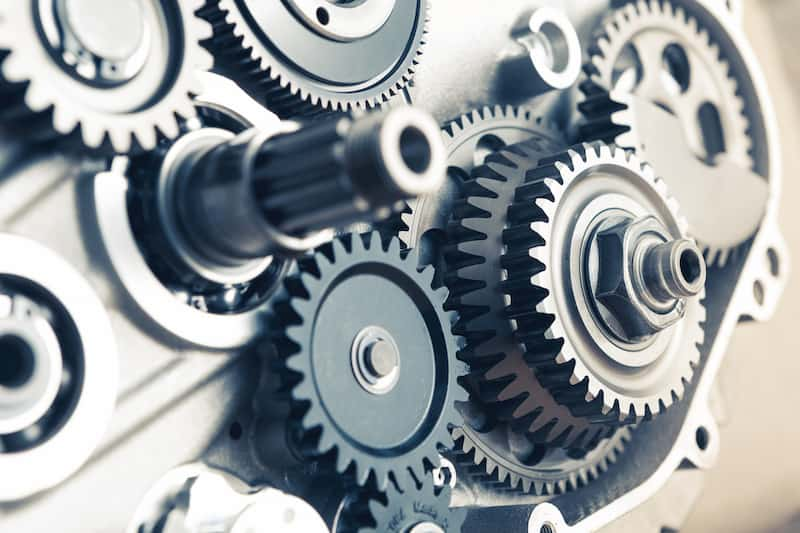
A gear reducer is a device that transmits mechanical power from an electric motor to a driven load. A gear reducer converts the high-speed and low-torque input from the motor into low-speed and high-torque output. Gearboxes are used to improve the efficiency of any operation.
Types of Gear Reducers
There are many different sets of gear reducers, depending on requirements related to cost, operational factors, geometry, noise, vibration, thermal environments, and load-bearing capability.
Planetary Gear Reducer
Planetary gearboxes are a type of gearbox where both input and output have the center of rotation. Planetary gears are suitable for significant torque and impact-loading applications because multiple gear teeth are engaged at once.
The four main components of this speed reducer are the sun gear, the planet gear, the ring gear, and the carriage. It is characterized by the ring gear orbiting around the sun gear.
Planetary gear reducers are compact, highly efficient, and have a long service life. The main disadvantage of planetary gear reducers is that they are more expensive than other types of gear because of their complex design.
Worm Gearboxes
A worm gearbox consists of an input gear(screw, worm) and an output worm gear. A worm gear is a cylindrical worm that meshes with a larger gear. The worm gear transmits power through right angles on non-intersecting shafts. The worm needs several revolutions to drive the large gear through a single revolution.
Previously, worm gearboxes were considered highly inefficient and unreliable because of their design. But now, worm gearboxes are as efficient as helical gearboxes and can offer benefits like changing the rotational direction. However, because of friction, worm gearboxes require frequent lubrication, or the worm gears and toothed wheels will wear out quickly and sometimes snap.
Worm gearboxes are typically used on applications requiring high speed and limited space. Worm gearbox’s main applications are: packing machinery, conveyor belts, rolling mills, lifts, mining, hoists, escalators, etc.
Helical Gearboxes
A helical gear transmits torque between parallel input and output shafts or non-parallel shafts, known as cross-axis gears. It contains angled gear teeth that gradually engage; input and output teeth are fully engaged as the gear rotates. As more teeth share the load at a specific time, a helical gear reducer has a big load-carrying capacity, which results in lower stress and reduced wear on gears.
Also, the gradual engagement of the teeth leads to a quieter and smoother operation than other gear reducers. The main disadvantage of helical gear reducers is the high maintenance cost because of the complex finishing.
Helical Gearboxes are used in fertilizer, printing, steel, rolling, power, port, textile, plastic, food, conveyors, elevators, blowers, compressors, oil industries & cutters.
Bevel Gearboxes
A bevel gear reducer is usually a cone-shaped gear configured at right angles. It is used when the angle of the input shaft needs to be changed to accommodate the output shaft. A bevel gear reducer is suitable for applications requiring a low ratio of right-angle reducer. It is compact and can handle high power. A bevel gear is perfect for operations that require high torque.
Bevel gear reducers’ performance levels are lower than that of planetary gearboxes. Bevel gear reducers are also exceedingly costly and demanding to maintain.
Feel free to visit HVH Industrial Solutions if you have any questions, need more information, or are interested in purchasing a gear reducer.
Also, you can check our Engineering Blog for more informative articles.
